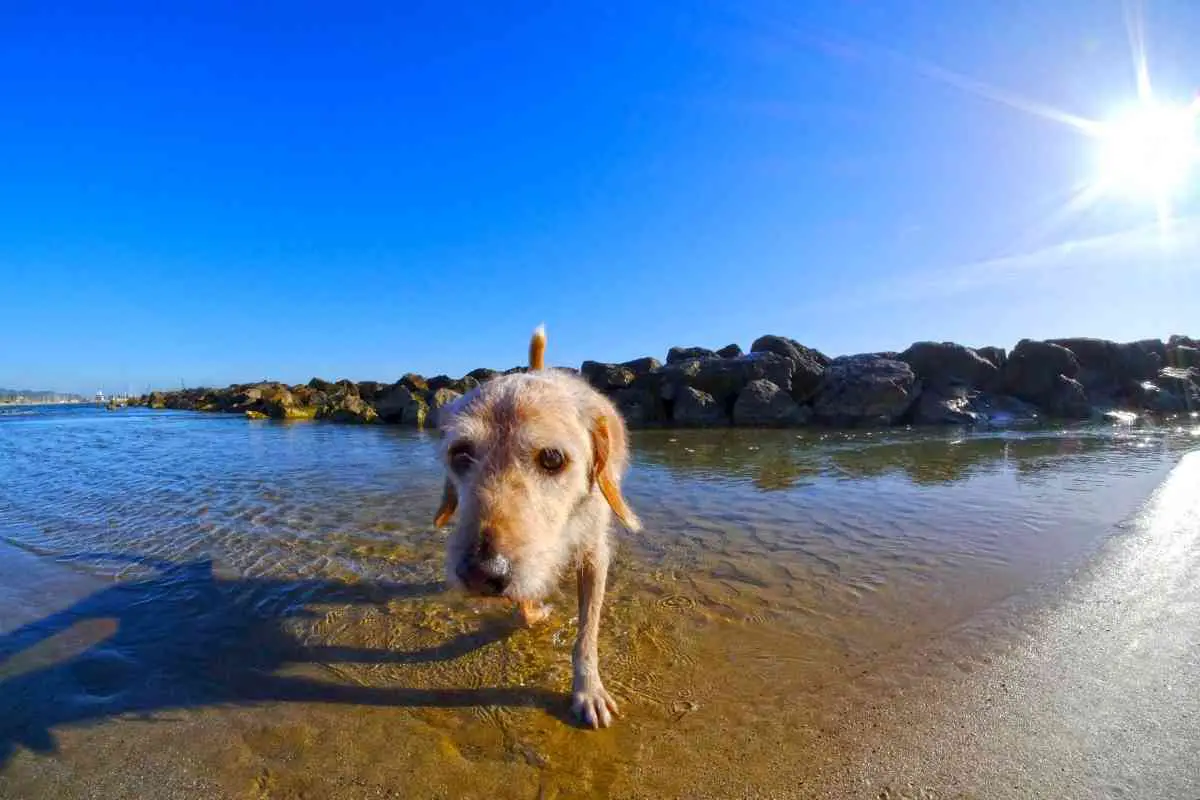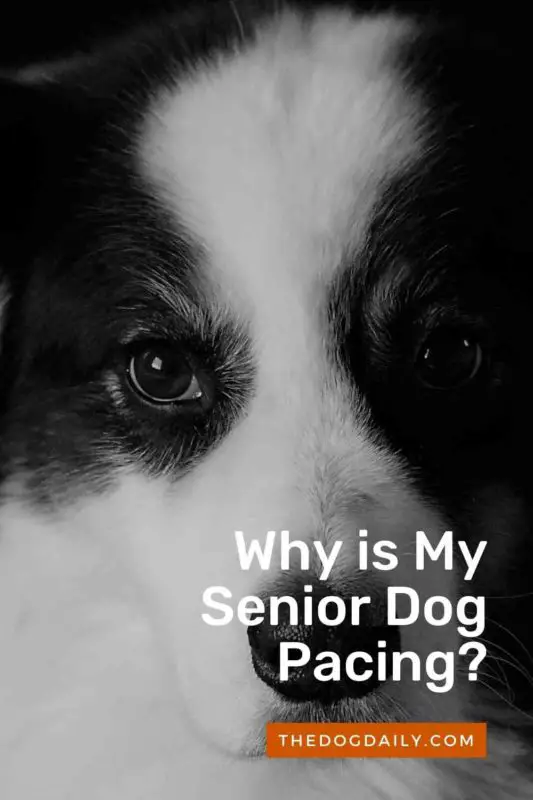Dog Pacing
Humans pace for a variety of reasons. It could be a restless soon-to-be father in the waiting bay of a hospital. Or a nervous candidate awaiting the results of a test or vote. In all cases, when humans pace, the underlying reason is within the mind. So what causes dog pacing?
Dogs also walk back and forth aimlessly. But unlike their more sophisticated owners, there are many underlying reasons. Sometimes dogs pace because of anxiety and restlessness, as their owners often do. But other times, the trigger for pacing could be in the environment or a hormonal imbalance. In some cases, pacing could be a symptom of a brain condition or an ailment in the body. But do not worry. We will tell you more about why the dog behaves this way and how to handle the situation. Learning about pacing will help you to stop worrying, be concerned and take appropriate action.
Pacing in Senior Dogs VS in Younger Dogs
In an article published on petmd, dog health expert – Dr. Heidi Lobprise – explained that most dogs could be considered seniors if they crossed the five-year mark. If your dog is not yet five and is pacing, the reasons could be environmental, behavioral, or hormonal issues.
A young dog may pace because it suffers from separation anxiety. Sometimes young, territorial, and protective dogs pace because there could be something in the environment (like another animal) causing restlessness. In many cases, young dogs pace as a result of an overwhelming drive to mate. Sometimes they are plain bored and want some action.
Whether young or old, pacing is not a natural dog behavior. You should consult a vet or an expert in dog behavior if your dog paces persistently. Simple solutions like neutering, spaying, condition training, exercise, or even simple equipment like anxiety vests or a calming dog bed can help to calm an anxious dog.
A study published by the National Center for Biotechnology Information (NCBI) shows that senior dogs, irrespective of the breed, pace more than younger ones. Some people call it the ‘Old dog syndrome,’ and many pet owners dismiss pacing as a sign of natural ageing. But it is not. If your older four-legged companion has begun pacing, you must take it seriously. It could be a sign that something more serious is going on. Here are some of the possible causes and what you can do.

Why Senior Dogs Pace
Senior dogs can pace due to behavioral and hormonal issues as their younger counterparts. Also, an older dog could start walking back and forth as a response to discomfort. The source could be internal or external. The dog could have eaten something that did not go well in the tummy. Or it could be due to complex intestinal disorders. Either way, it is vital to establish the source of discomfort and make your dog comfortable.
If your senior dog is healthy, well-trained, and ordinarily well-behaved, pacing should ring the alarm bells. By the time your dog crosses the five-year mark, they are expected to be less sensitive to pacing triggers such as separation from the owner and other environmental activators. A well-trained dog should have adapted to his environment by this age, and separation anxiety should not be an issue. Biological triggers, such as the drive to mate, should also not be as pressing as when the dog was younger.
Here are reasons why a senior, well-trained, and healthy-looking dog could pace:
-
Gut and Liver Disorders
You may be wondering what the gut and liver have to do with pacing. Our Fit Pets explains that older, large-breed dogs are prone to a gut condition known as Gastric Dilatation and Volvulus (GDV). However, it can affect any breed. The cause is yet to be understood. But the ailment is more common among hyperactive dogs. When a dog has this ailment, the stomach fills with gas (or bloats). It may not progress beyond this, but the discomfort causes the dog to pace. The condition could degenerate into a fatal volvulus. A volvulus is when the gas-filled gut twists internally and blocks both the entry and exit points in the stomach. At this point, the dog will require emergency surgery immediately.
Liver disease, on the other hand, may also seem like an odd trigger for pacing. However, senior dogs are prone to a liver disease known as hepatopathy. The ailment can degenerate into a brain disorder known as Encephalopathy. Thus senior dogs are susceptible to Hepatic Encephalopathy.
A dog suffering from this condition will experience abnormal neurological responses, including the following:
-
- Compulsive pacing.
- Running aimlessly. Sometimes the dog runs into walls and sometimes in circles.
- Confusion after meals.
- Seizures.
- Sudden aggression.
- Increased urination.
- Increased thirst.

-
Hormonal Disorders
If you are not a professional breeder, consider neutering or spaying your dog. This move will save you from a variety of dog behavior issues. Nevertheless, pacing in dogs could be a result of the overproduction of another hormone – cortisol. The condition is also known as Cushing’s Syndrome.
In this case, a tumor on the pituitary or adrenal gland presses against the brain or brain stem. It causes an increase in cortisol release and extensive neurological damage. The dog paces relentlessly due to the discomfort and may require surgery or a regimen of pharmaceutical therapies to reduce the tumor size.
-
Brain Tumor
Like humans, cases of cancer among dogs have soared over the last couple of years. Dogs today eat better diets and live in safer environments. They live longer. But, as they enjoy golden years, cancers and other age-related ailments are catching up.
No dog breed is immune to cancer. A study published by the National Center for Biotechnology Information (NCBI) shows that cancer affects one in two dogs aged ten years and over. Cancer is the leading cause of death in senior dogs. It kills 40% of all cases.
A dog with a brain tumor could have neurological disorders that will cause discomfort and confusion. Such a dog will pace up and down to cope with the condition.
-
Dog Alzheimer’s
Dog Alzheimer’s or canine cognitive dysfunction is the dog equivalent of Alzheimer’s disease in humans. The condition is also known as Dog Alzheimer’s, and it causes progressive confusion, disorientation, and memory loss in older dogs. The dog will pace and forget simple routines like peeing outside.
Dogs can also develop dementia and other cognitive decline issues as they grow older. You may notice the dog pacing more frequently (with a confused look), and he may become highly anxious. Studies reveal that by the time a dog hits 14years, it has a 40% chance of developing canine cognitive dysfunction (CCD).
Many people shrug off the symptoms dismissing them as signs of old age. But if unchecked, these mental issues could cause suffering in your dog as well as health issues.
-
Decreased Ability to Deal with Environmental Triggers
Aging in dogs often resembles humans. As they grow older, dogs tire sooner and can lose their sharp senses and quick reflexes. This could be a fear trigger that results in pacing. For example, a senior dog with a not-so-sharp hearing or smelling sense may become frustrated that they cannot handle the situation as they previously did. The dog will pace back and forth to deal with the anxiety of his inability to respond to the environmental trigger as he would have before.
Article written by Author: Elsa Smith


Pingback: 15 Signs Your Dog Could Be Nearing Their Final Days